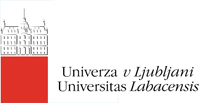The Ljubljana School of Architecture was established in 1920. The architects who left their indelible marks on the school were first Joze Plecnik and later Edvard Ravnikar. It is thanks to these two personalities that the Ljubljana School of Architecture become known all over Europe and the world. Nowadays the Faculty of Architecture in Ljubljana, with its over 1,000 students, represents one of the 26 departments of the University of Ljubljana. Confirmation of its quality comes from numerous successful students and graduates.
The Faculty of Architecture is an active player in the LLP Framework, since it extensively uses a wide network (EU Erasmus bilateral) for the exchanges of students, teachers and staff and also promotes Erasmus students placement. Annually, the flow of student exchanges consist of around 50 incoming (each year increasing) and around 40 outgoing students (both exchanges and placements). Following the constant participation in the Erasmus programmes since the year 2000 and due to the achievements, successful promotion and execution of the programme on a year-to-year basis, in 2008 the school received a Recognition of merit from the University of Ljubljana. The Faculty of Architecture carried out over the last 20 years researches and studies on the youngest North Adriatic Port: the Port of Koper. The Port is of essential importance for the city of Koper, the Coastal-Karst region and for Slovenia, being explicitly stated in the European Union’s documents (TINA - Transport Infrastructure Needs Assessment report) as one of the entrance points of the V Pan-European Corridor with a link to the maritime traffic corridor.
In October 2006, there has been a public open competition aiming to find comprehensive solutions on the urban development of the Port of Koper. The solution presented by the Faculty team awarded the first price and included a special urban and architectural effort intended to conceptualised the connective area of the urban city centre of Koper and the landscape with the port. These are increasingly keys issues in advancing contemporary urban design concept and represent an important opportunity for developing new models of port-city relationship. The project was expanded later as professional guidelines for the master plan of the Port of Koper, a unique urban and architectural initiative designed to conceptualise complete port area and the connective area between the port, the Koper city centre and Ankaran.



